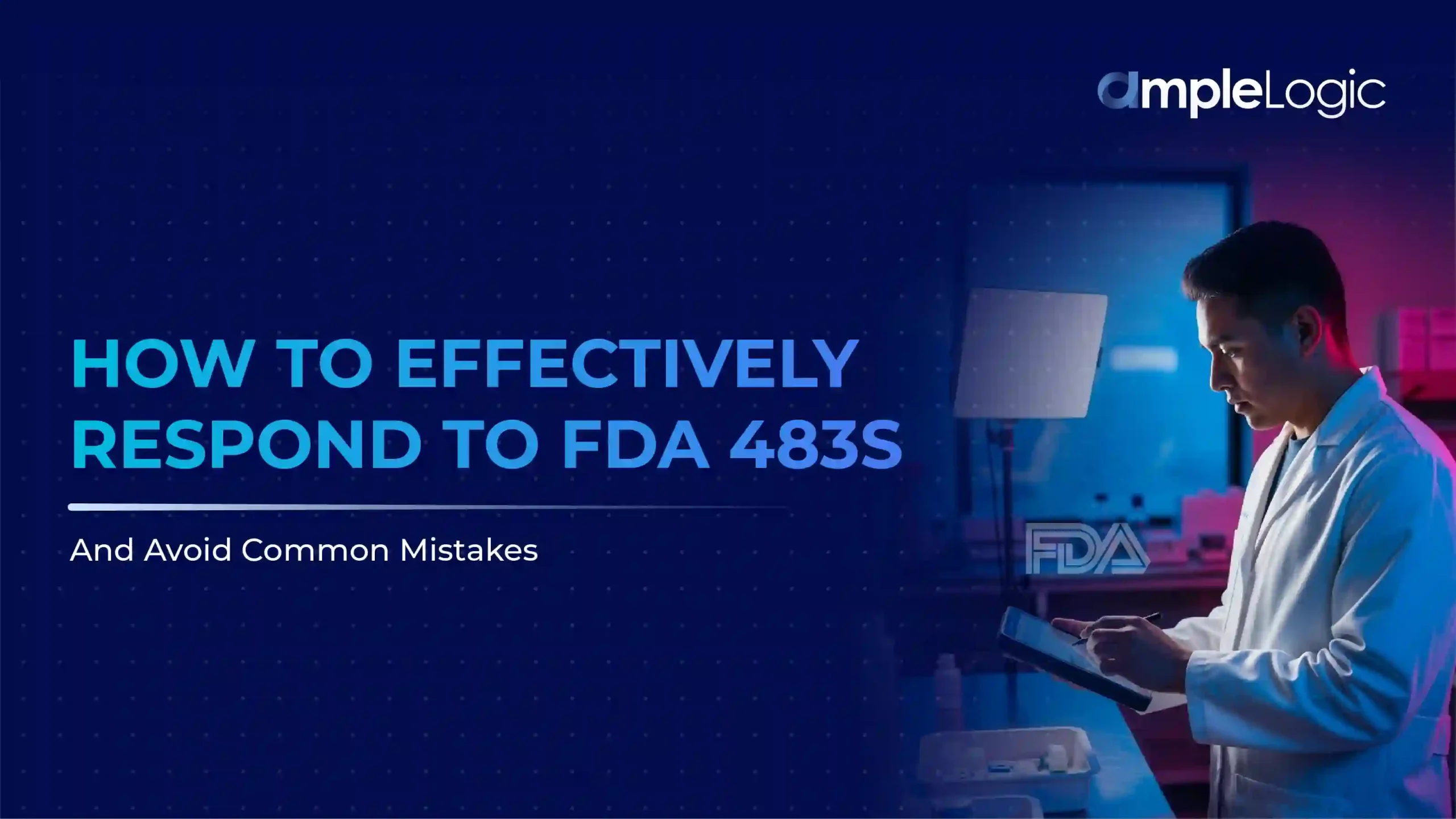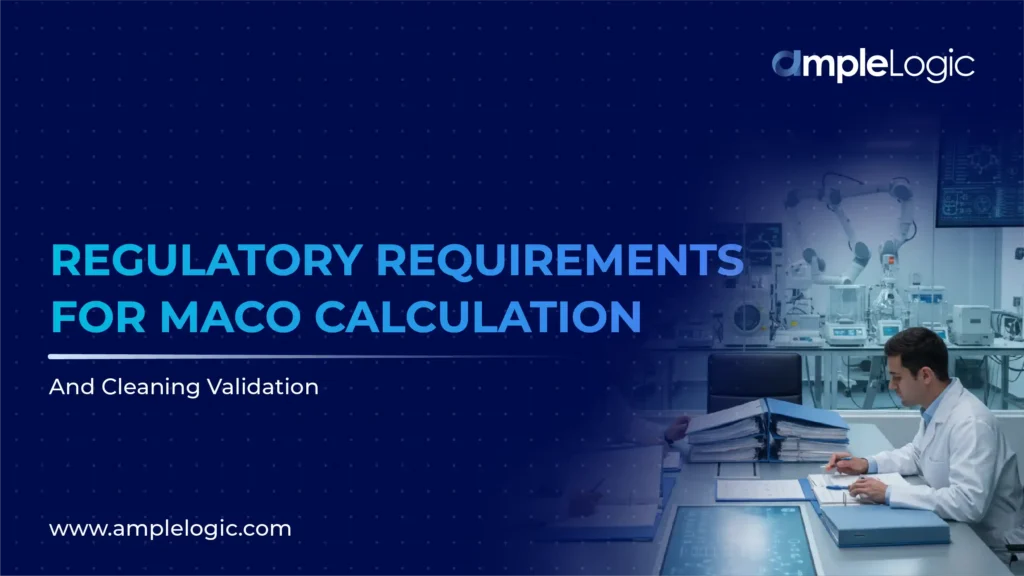
An FDA Form 483 is an official notification issued to manufacturing sites following an inspection, highlighting observed conditions that may violate any regulations or laws that the FDA is authorized to enforce. For life sciences executives, the implications of an inadequate response are significant: escalations can include warning letters, import alerts, or even consent decrees, each with material impact on product distribution, reputation, and investor confidence.
If your organization’s response is delayed, non-specific, or superficial, the consequences of mishandling a 483 observation can include warning letters, import alerts, consent decrees, and costly business disruption
The Critical Stakes of FDA 483 Responses
Form FDA 483 is issued at the conclusion of an FDA inspection, listing observations that, in the investigator’s judgment, indicate potential nonconformities with statutory or regulatory requirements. The clock starts immediately: an effective, well-supported response within 15 business days is not only expected, it is almost always necessary to prevent further escalation.
Failure to deliver a timely, specific, and actionable response can lead to:
- Escalation to Warning Letters: Publicly posted, damaging brand credibility, and delaying approvals.
- Import Alerts & Consent Decrees: Severe restrictions or legal action on operations, often affecting entire product lines.
- Loss of Business & Market Share: Public disclosure leads to customer attrition and competitive disadvantage. Notably, some device manufacturers have lost contracts worth hundreds of millions due to major compliance failures.
- Increased Operational Costs: Prolonged remediation efforts, external consultants, and management distractions siphon millions in direct and indirect costs.
7 Common Inadequacies in FDA 483 Responses
Despite the high stakes, recurring pitfalls persist in company responses:
- Lack of specificity: Generic statements (“We are reviewing our processes”) are routinely cited in warning letters as insufficient. The FDA expects factual detail, not placeholders.
- Vague commitments: Phrases such as “We will look into it” or “We plan to address this soon” undermine regulatory credibility and suggest a lack of urgency.
- Absence of root cause analysis: Failure to diagnose systemic drivers behind nonconformities leaves issues unresolved for future inspections.
- No timelines or weak CAPA plans: Responses lacking implementation timelines, assigned accountability, or measurable outcomes signal to the FDA that the issue may persist.
- Failure to implement systemic solutions: Addressing only the immediate observation, rather than correcting the underlying process or system, is a common error that leads to repeat citations.
- Missed Deadlines or Progress Updates: Failing to inform the FDA of delays or corrective actions not met within committed timelines.
- Poor Documentation & Evidence: Submissions lacking objective evidence, such as updated SOPs, training records, or proof of CAPA implementation.
Analysis of recent FDA warning letters in 2025 shows that over 50% reference inadequate or incomplete responses to prior 483 observations, underscoring that deficiencies in the response process, not original findings, often trigger enforcement escalation.
FDA Expectations for an Effective Response
Companies must align with established FDA expectations, which demand far more than superficial corrections. The Agency’s expectations are explicit and, increasingly, backed by detailed, public guidance:
- Clear acknowledgment: Directly validate each observation, demonstrating understanding and ownership.
- Thorough root cause analysis: Use structured methodologies (e.g., Fishbone, Five Whys) to identify why the issue occurred and prevent recurrence.
- Detailed CAPA: Specific corrective and preventive actions should be outlined—what, how, and by whom—supported by process documentation or revised SOPs.
- Timelines with accountability: Each action should have a reasonable, defined timeline and assigned responsible personnel.
- Evidence of implementation: Supply objective evidence (records, batch documentation, training logs) that actions are underway or complete.
- Follow-up plans: Describe how ongoing monitoring will ensure sustained compliance.
Real-World Examples
Redacted FDA warning letters published in 2025 provide instructive contrasts. One cited a response as “lacking sufficient detail and documentation,” noting the company “failed to provide evidence that corrective actions were implemented or to identify the root cause of the deviation.” In contrast, responses commended by the FDA included root cause analysis reports, updated procedures, employee training records, and clear milestones for remediation.
Role of Digital Solutions
Modern digital quality management systems (QMS), such as AmpleLogic, facilitate robust FDA 483 response management:
- CAPA tracking: Automate assignment, progress tracking, and closure verification, reducing risks of overlooked commitments.
- Timely closure: Configurable alerts help ensure management does not miss critical regulatory deadlines.
- Audit trails: Comprehensive, immutable records allow companies to demonstrate response integrity and due diligence during FDA follow-ups.
- Centralized documentation: All evidence and communications are available in a single, accessible portal for future audits and inspections.
Industry data shows that companies deploying digital QMS solutions reported a 30–50% reduction in repeat FDA 483 citations for the same issue and improved inspection outcomes compared to companies relying on manual tracking.
Checklist for a Solid FDA 483 Response
Use this step-by-step process to structure every FDA 483 response:
- Directly acknowledge all observations (reference each 483 item by number).
- Provide a root cause analysis for each observation.
- Detail immediate corrective actions undertaken.
- Outline preventive measures to avoid recurrence.
- Assign accountability for each action and include the department/person.
- Provide a timeline for implementation and completion.
- Include objective evidence of actions (documents, logs, updated forms).
- Establish a follow-up plan for ongoing monitoring.
- Submit all supporting documentation as appendices.
- Commit to periodic status updates, if applicable.
Conclusion
An FDA 483 is not simply a compliance formality, but tests the maturity of a company’s quality culture. Incomplete, unsubstantiated, or delayed responses expose organizations to escalated enforcement and reputational risk, while thorough, transparent, and well-documented actions can mitigate penalties and strengthen long-term regulatory standing. Executives must ensure a structured, proactive approach to 483 responses, recognizing that a poorly handled response may carry greater consequences than the original observation itself.





























